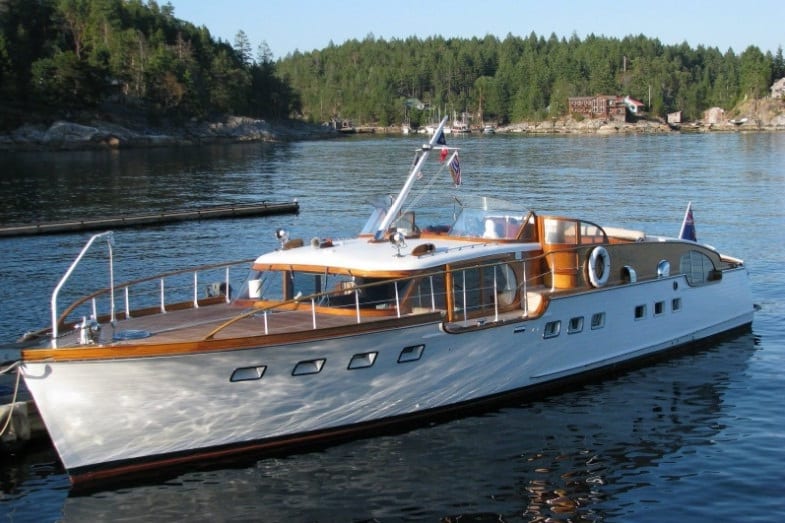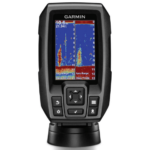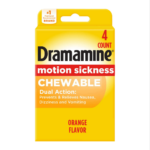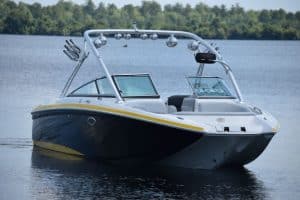Yachts come in all shapes and forms. But what really is a yacht? How will you know if you are looking at a yacht or just a boat with impressive features? In this article, I’ll describe what is a yacht and how it is different from other boats.
What is a yacht? A yacht is a water vessel used for recreation, racing, or cruising – for private or business purposes. Yachts are powered by a motor or a sail. They are typically at least 33 feet (10 meters) long and have good aesthetic qualities.
Read on to learn more about what a yacht is, including some surprising facts about them.
What Is a Yacht?
A boat or any water vessel should be at least 33 feet (10 meters) long and have above-standard aesthetic qualities to become a yacht. That means it should offer excellent accommodations and amenities onboard. There is such a wide variety of yachts, which is why it can be difficult to give a standard definition for this type of watercraft.
What makes a boat a yacht? Generally, a yacht is an expensive boat powered by sail, gasoline, diesel engine, or a combination of these three. Yachts are mainly used for pleasure, racing, or cruising.
What size boat is considered a yacht? A yacht could have the size of a large boat or a small ship. Yachts are typically at least 33 feet (10 meters) and have good aesthetic qualities. The Commercial Yacht Code classifies large yachts a being 79 ft (24 meters) and over.
The term yacht comes from jaght, a Dutch word meaning light and fast sailing vessel that the early Dutch Navy used to hunt and capture pirates.
Large yachts are at least 79 ft. (24 m) according to the Commercial Yacht Code. These large yachts often have a hired crew and are built with more expensive and stronger materials. There are commercial yachts that can carry 12 passengers. The features of a yacht are for the pleasure of the owner and their guests. Such yachts can also carry the flag of a country for official use.
Then there are the superyachts or megayachts. These vessels are usually longer than 131 ft. (40 m). Currently, there are over 15,000 yachts all over the world run by professional crews. On the smaller end are the racing yachts, which are typically not more than 33 ft. long. Their design is mainly for performance rather than comfort.
Brief History of Yachts
The word yacht came from jaght, a Dutch word. Its original meaning refers to the fast and light boats that the Dutch Navy used to hunt and catch pirates during the early 1600s. King Charles the Second used one to return to England from his exile in the Netherlands in 1660. Word quickly spread out that this type of water vessel (and not just any old boat) carries very important people.
Today, yachts are not only powered by sails but also by gasoline and diesel engines. There are still yachts that use sails to travel around the world. But most modern yachts these days are motorized and use heavy-duty gas or diesel engines to navigate the world.
What Are the Different Types of Yachts?
Yachts are classified into many different types or categories since there’s really no definitive meaning of the word. Let us discuss each classification below.
1) Royal Yachting Association Classifications
There are four categories of yachts, according to the RYA. They are designated according to the seas and wind force that they are expected to encounter.
1. Class A Yachts
The design of these yachts can withstand wind force 8 of 40 knots (21m/s) and 13-foot (4 m) maximum wave heights encountered in extended voyages and ocean passages.
2. Class B Yachts
These are the yachts that can take less than wind force 8 of 40 knots (21m/s) and 13-foot (4 m) maximum height of waves encountered in extended voyages and ocean passages.
3. Class C Yachts
These yachts can withstand wind force 6 of 27 knots (14 m/s) and 6.6-foot (2 m) maximum wave heights encountered in rivers, lakes, exposed coastal waters, and bays.
4. Class D Yachts
Yachts of this class can take wind force 4, which is 16 knots (8.2 m/s) and 1.6-foot (0.5 m) of maximum wave heights encountered in rivers, lakes, inlets, bays, and sheltered coastal waters.
2) Large Commercial Yacht Code Classifications
Great Britain has another classification called the Large Commercial Yacht Code or LY2. This code defines large yachts measuring 79 ft. (24 m) or more at the waterline. They are also used commercially for pleasure or sport and are operated by a professional crew. However, these yachts do not carry more than 12 passengers.
This code regulates the equipping of these yachts, both in port and at sea. The classification focuses on things, such as the availability of a helicopter on deck and the crew’s duty times. This code sets different standard levels for yachts below or above 500 gross tons. The bigger yachts are usually regarded as superyachts measuring 130 ft. (40 m) long. Other countries have their own versions of LY2.
What size boat is considered a yacht? A yacht could have the size of a large boat or a small ship. Yachts are typically at least 33 feet (10 meters) and have good aesthetic qualities. The Commercial Yacht Code classifies large yachts a being 79 ft (24 meters) and over.
3) Motor Yachts Classifications
This system is another method of classifying yachts. In this system, standard yachts are those in the range of 26 to 130 ft. (7.9 to 39.6 m) long. Once they exceed 130 ft. long, they are already considered superyachts.
There are four classes of motorboats, according to the United States Coast Guard. To the USCG, all watercrafts less than 65 ft. (20 m) and propelled by machinery are classified as:
- Class A – Motorboats that are less than 16 ft. (4.9 m)
- Class 1 – Motorboats from 16 to 26 ft. (4.9 to 7.9 m)
- Class 2 – Motorboats from 26 to 40 feet (7.9 to 12.2 m)
- Class 3 – Motorboats from 40 to 65 ft. (12 to 20 m)

4) Cruising Yachts
Yachts can also be classified as cruising yachts if they are mainly used for passage-making and near-shore trips. They are specifically designed for passengers’ comfort and have the amenities required during overnight voyages.
For a boat to become a cruising yacht, it must include features, such as ease of handling, living comfort, comfort underway, stability, performance, durability, affordability of ownership, and ease of maintenance.
Cruising yachts can be further classified into the following:
- Offshore Yachts – These yachts are usually more than 45 ft. (14 m) long.
- Near-shore Yachts – These are yachts that range from 33 to 45 ft. (10 to 14 m) long.
- Small Yachts – These shorter yachts usually measure less than 33 ft. (10 m) long. Yachts that are shorter than 25 ft. (7.6 m) fall into this category. Another term for these small yachts is trailer sailers because you can easily tow them by car. Their average weight is about 5,000 pounds or 2.300 kilos.
5) Racing Yachts
What is considered a yacht for racing? Racing yachts put more emphasis on performance instead of comfort. They have high-performance rigs that provide aerodynamic efficiency. The hulls of these yachts are very hydro-dynamically efficient in minimizing sideways motion and drag through the water.
According to the World Sailing Newsletter, there are 11 classes of racing yachts. They are as follows:
- Farr 30 – 30.9 ft. (9.4 m) long
- X-35 – 34.0 ft. (10.36 m)
- J/111 – 36.4 ft. (11.1 m)
- Class40 – 39 ft. (11.9 m)
- Soto 40 – 40 ft. (12.3 m)
- X-41 – 40.5 ft. (12.3 m)
- Swan 45 – 45.4 ft. (13.83 m)
- Transpac 52 – 52.0 ft. (15.85 m)
- IMOCA 60 – 60 ft. (18 m)
- Swan 60 – 61.8 ft. (18.85 m)
- Maxi Yacht – 70 ft. (21 m)
6) Style
The classification of yachts also includes yacht style. The following are the styles of yachts you can see berthed in a typical marina:
- Cruiser – This yacht has a displacement hull in its design for long-distance and economical boating trips.
- Expedition – Like the cruiser, this yacht also has a displacement hull for long-distance and economical trips to remote places. Another term for this type of yacht is the explorer yacht.
- Trawler – This yacht has a traditional and conservative design built with a regular displacement hull for inexpensive and medium-distance boating trips.
- Sports Fisherman – This yacht has a semi-displacement hull called a planing hull. It is suitable for quick trips and typically carries fishing gear for catching big fish.
- Lobster – This yacht is similar to Maine’s lobster boat built with a semi-displacement or planing hull for quick trips.
- Sports Cruiser – This yacht is suitable for quick trips due to its semi-displacement hull.
What Are Yachts Made Of?
Gone were the days when boats were wholly made of wood. Aside from wood, you can now see watercraft built with fiberglass, aluminum, iron, stainless steel, or a combination of these materials.
During the 1990s, fiberglass became a popular material for building boats. Today, most yachts measuring 79 ft. (24 m) long and below are built using fiberglass. Aluminum, steel, or composite plastic reinforced by fiber are the materials often used in bigger yachts. The yachts that you see resting in marinas today are more likely made of the following materials:

1) Fiberglass
One of the things that made fiberglass a popular material for building boats is that it is best for mass production. By utilizing a mold, boat builders can make a boat faster than using wood or steel. This material also offers strength and durability. Repairing a fiberglass boat is not very difficult as well. The hulls of these types of boats have layers or plies of fiberglass skins and matting soaked in high-strength resin.
2) Metal
Bigger yachts have metal hulls made of steel, aluminum, or a combination of both and other materials. Aluminum is lighter, which equates to less fuel consumption to move it forward. Steel is also easy to repair since boatyards have extensive knowledge of using it a long time ago.
3) Wood
Traditional types of boats are most likely made of wood. The usual method used in boat building is planks over ribs. In the WEST system, plies of wood strips are soaked in epoxy and applied or attached to the boat’s wooden frame. Wood is supremely buoyant in water. That is why it is still being used in boat building today.
What Makes a Boat a Yacht?
In general, there are two types of yachts sailing the rivers and seas of the world now. They are sailing yachts and motor-powered yachts. What makes a boat a yacht? You have a yacht when it reaches a size wherein you need a crew to operate it safely. Those who operate and sail yachts are called yachtsmen.
You also have a yacht if your boat is of the minimum size and equipped with luxurious comfort and hotel-like amenities. If your boat doesn’t have these minimum qualities, it is still just a boat.
Is a Yacht Different from a Boat?
What is the difference between a boat and a yacht? The main difference between the two is that a yacht will always look and feel fancier than a boat or regular ship. If it appears and smells luxurious, given its minimum size, it is a yacht. Boats can be built for many things. But yachts are built mainly for fun and leisure.
How Much Does an Average Yacht Cost?
The factors that determine the price of a yacht are its size, age, and brand. According to current sales data, the average cost of a yacht is $8.4 million, all factors considered.
What Is the Most Expensive Yacht Operating Today?
The Russian billionaire, Roman Abramovich, owns the most expensive yacht in the world today. He owns the Eclipse, a 528 feet superyacht launched in 2009. Its development cost is more than $1 billion.
Seventy crew members operate this small ship. They have to be that many because of the state-of-the-art communication equipment, electronics, and all the trappings of a super luxurious sea craft. This boat even has its own defense system.
Conclusion – What Is a Yacht?
So, to recap, what is a yacht? A yacht is a water vessel used for recreation, racing, or cruising, powered by sail or motor. A yacht can be a medium-sized water vessel or a small ship used for private and official purposes.
However, there is really no standard definition because you can use this term for any watercraft with cabins, accommodations, and amenities for overnight use.
Related reading:
Types of Boats – Full List of 20 Different Types
How Much Does a Yacht Cost to Own?
How Much Does It Cost to Rent a Yacht? Day, Week, and Party Rate

![Microskiff Boats [What Are They? And the Best Microskiffs] microskiff](https://boatinggeeks.com/wp-content/uploads/2021/07/microskiff-150x150.jpg)
![Towee Boats [Models, Specs, and Review] towee boats](https://boatinggeeks.com/wp-content/uploads/2021/04/towee-boats-150x150.jpg)






![Read more about the article How Much Does a Pontoon Boat Weigh? [With 7 Examples]](https://boatinggeeks.com/wp-content/uploads/2020/10/pontoon-boat-weight-300x200.jpg)